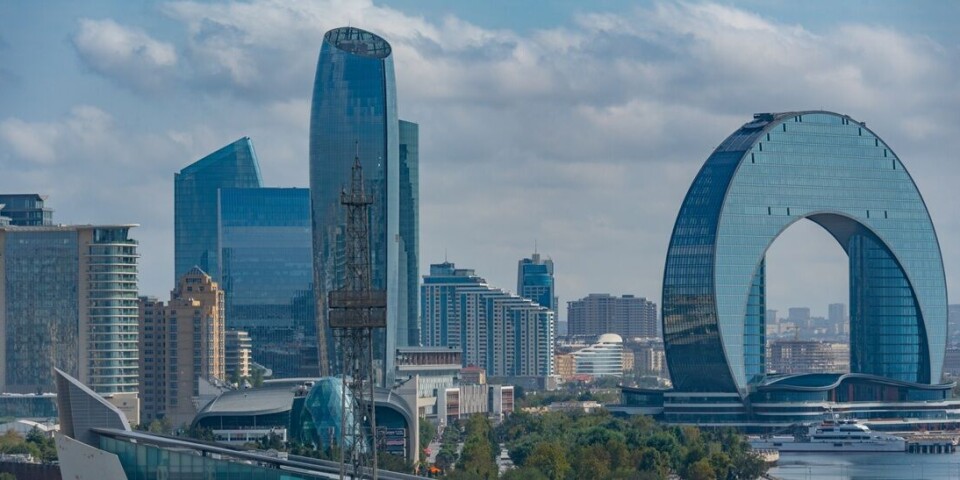THIS CONTENT IS BROUGHT TO YOU BY NTNU Norwegian University of Science and Technology - read more
It's entirely possible to make housing construction more environmentally friendly
In areas with rapid population growth, more housing is needed. New research shows that emissions from construction can be greatly reduced.

Residential construction requires large amounts of energy and materials. But there is significant potential for savings.
Researcher Şahin Akın and colleagues at NTNU have taken a closer look at resource use in the housing sector in West Asia and North Africa towards 2050.
The results show that it is possible to reduce greenhouse gas emissions by up to 56 per cent in this area over the next 25 years.

“We investigated resource efficiency in nearly 1,000 different types of residential housing in 19 countries in West Asia and North Africa (WN), and looked at various possible scenarios for the next 25 years,” he says.
These are areas with large economic differences, and where the effects of climate change are strongly felt. The emissions are significant.
Big cuts in emissions are possible
Residential construction accounts for 21 per cent of global energy use. Materials used to build homes account for 30 per cent of the carbon footprint of the world’s total material production.
The carbon footprint is the total amount of greenhouse gases directly and indirectly emitted as a result of human activity.
Akın focused specifically on the characteristics of three types of housing: single-family homes, multi-family houses, and high-rise/apartment buildings.
The work also included informal housing, because the majority of the countries are quite poor, and informal settlements make up a significant part of the total housing stock. Although they do not use much energy, they do use materials.
Akın and the research team developed a dynamic stock model using the data from these four housing types. With the model, the researcher evaluated 10 future scenarios.
Countries not studied before
“In our case, we focused on regions in North Africa and West Asia that had not been studied before, as most research on this topic generally takes place in Western countries,” says Akın.
The researchers looked at the Caucasus countries, including Azerbaijan, Georgia, and Armenia, as well as highly resource-rich countries on the Arabian Peninsula, such as the United Arab Emirates, Kuwait, Bahrain, and Oman.
They also studied countries like Egypt, Algeria, Morocco, and Turkey.
All of these are areas where building methods have been adapted to both climate and economy through generations. This can be seen in the use of local materials and solutions that provide natural cooling and ventilation without the use of energy.
But things are changing.
This applies especially to the Gulf countries, with their economic growth that influences building styles and lifestyles. This leads to increased energy use through Western building styles, such as more use of concrete and air conditioning.
Concrete is a major culprit, and the energy used for cooling increases emissions.
How can greenhouse gas emissions be reduced?
Akın has studied various scenarios that could reduce energy use, material consumption, and other related greenhouse gas emissions in these countries.
The results from the model show that a combined strategy can reduce operational emissions by 60 per cent. Emissions from materials can be reduced by 47 per cent. This results in a total greenhouse gas reduction of 56 per cent by 2050.
“This is surprisingly good,” says Akın.
As a baseline, Akın established a ‘business-as-usual’ scenario, where no measures are taken at all. The results for this scenario are quite discouraging.
If we continue as before, emission levels will increase. In these regions, a population boom is also expected by 2050, which alone will require more and larger homes.
If we further assume that people in the future want to live much more comfortably, those who can afford it will switch from informal housing to residential buildings.
"This will also create enormous energy and material demands, and they will likely switch to electricity-powered air conditioning, as the old building traditions with natural ventilation and materials that keep houses cool are abandoned,” says Akın.
Tested 10 different scenarios
The research team also tested 10 resource efficiency scenarios focusing on materials, energy, fuel, and energy preferences. They also studied various combinations of the strategies.
Since the majority of the countries are located in a desert belt, it gets quite hot. When it came to cooling houses, they tested reflective white paint on all envisioned new buildings. This would reflect the sun’s rays.
They also tested heat pumps and controlled lighting, as well as more environmentally friendly concrete.
One test involved reducing the number of square metres per person, as houses have grown in size in line with economic prosperity.
Each combination had varying effects on energy consumption, material use, and greenhouse gas emissions, depending on the type and country. A combination of all the measures gave the best effect for the entire region, with a potential emissions reduction of up to 56 per cent.
Akın stresses that this is just an exercise conducted in a model based on housing types that are representative of the region in question.
“But once you have the knowledge, you can also make informed choices,” he says.
Involving the local population
Akın believes it will take time to implement the necessary measures, but emphasises the importance of involving the local population at all levels.
“I think local experts should develop solutions tailored to their specific building stock. I am of the opinion that they know their buildings better than we do, and they also know the local inhabitants. They're familiar with their habits, building traditions and lifestyles,” says Akın.
He also believes that AI will be a useful tool for such plans in the future.
The researcher is surprised that it seems possible to reduce emissions to such a large extent.
“I didn’t expect that, to be honest," he says.
For the population is growing and many new houses will be built. In the scenarios, the researchers stopped construction of new informal houses and replaced them with single-family homes or multi-family houses. They also did not include renovation measures.
"Between 2024 and 2050, we built houses according to the population increase. I expected a smaller emissions reduction, so a 56 per cent reduction in land-based emissions is pretty good,” he says.
Reference:
Akin et al. Future resource efficiency scenarios for the Western Asian and Northern African residential buildings: An exploratory study, Sustainable Cities and Society, vol. 125, 2025. DOI: 10.1016/j.scs.2025.106351
———
Read the Norwegian version of this article on forskning.no
More content from NTNU:
-
More than 120,000 Norwegians suffer from work-related anxiety
-
Forever chemicals affect ducklings' genes while they are still in the egg
-
Why are pregnant women in Norway so worried?
-
Politics on Facebook: Populist parties choose divisive issues on purpose
-
Social media is connected to cyberbullying – but not how we thought
-
Forskere ved NTNU får nesten 24 millioner av EU for å lage nye strømomformere





































